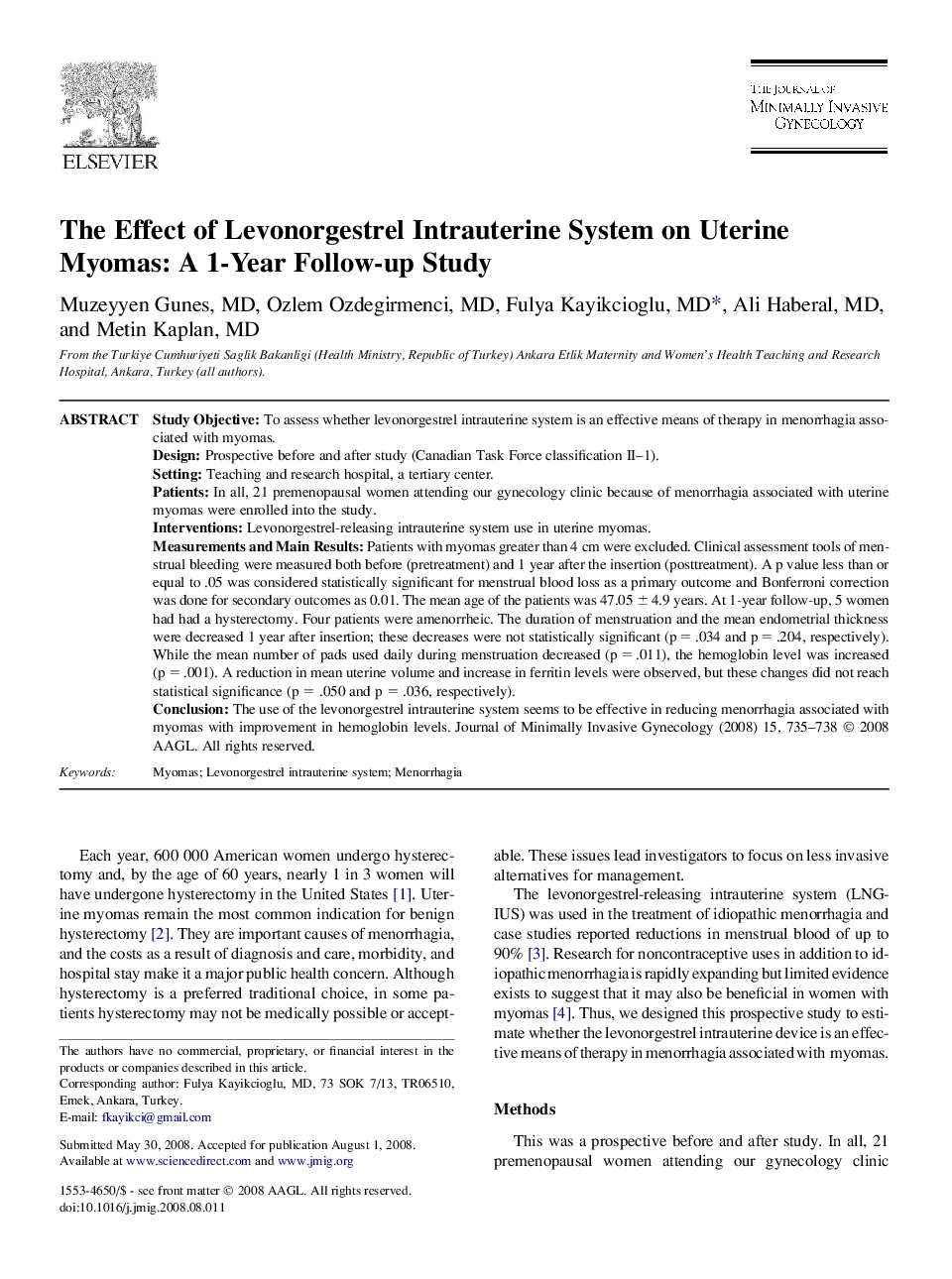| Article ID | Journal | Published Year | Pages | File Type |
|---|---|---|---|---|
| 3957765 | Journal of Minimally Invasive Gynecology | 2008 | 4 Pages |
Study ObjectiveTo assess whether levonorgestrel intrauterine system is an effective means of therapy in menorrhagia associated with myomas.DesignProspective before and after study (Canadian Task Force classification II–1).SettingTeaching and research hospital, a tertiary center.PatientsIn all, 21 premenopausal women attending our gynecology clinic because of menorrhagia associated with uterine myomas were enrolled into the study.InterventionsLevonorgestrel-releasing intrauterine system use in uterine myomas.Measurements and Main ResultsPatients with myomas greater than 4 cm were excluded. Clinical assessment tools of menstrual bleeding were measured both before (pretreatment) and 1 year after the insertion (posttreatment). A p value less than or equal to .05 was considered statistically significant for menstrual blood loss as a primary outcome and Bonferroni correction was done for secondary outcomes as 0.01. The mean age of the patients was 47.05 ± 4.9 years. At 1-year follow-up, 5 women had had a hysterectomy. Four patients were amenorrheic. The duration of menstruation and the mean endometrial thickness were decreased 1 year after insertion; these decreases were not statistically significant (p = .034 and p = .204, respectively). While the mean number of pads used daily during menstruation decreased (p = .011), the hemoglobin level was increased (p = .001). A reduction in mean uterine volume and increase in ferritin levels were observed, but these changes did not reach statistical significance (p = .050 and p = .036, respectively).ConclusionThe use of the levonorgestrel intrauterine system seems to be effective in reducing menorrhagia associated with myomas with improvement in hemoglobin levels.
